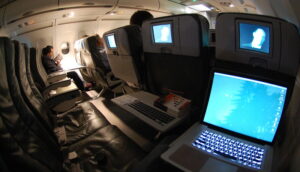Companies are still struggling to accurately determine the ROI of business travel and travel expenses. This has been an ongoing problem faced by businesses of all sizes, from 5 to 5,000 employees.
So we’re certainly not going to solve it here.
But we might be able to give you some things to think about.
3Gen Research conducted a survey in October 2019, and they asked over 500 senior finance executives about company spending and the results bore out the ROI dilemma: how do you prove that business travel has a positive ROI or how do you know which business trips led to the biggest ROI?
Out of the respondents, 27 percent said that travel-and-entertainment spending is the highest area among their financial expenses. At the same time, 48 percent said they did not quite understand how the company determined the ROI for T&E.
This is a symptom of not properly examining travel expenses in order to maximize the ROI. And there are a few reasons why this is happening.
1. Travel policies are not clearly written
 Companies may not be providing clear guidelines for what kinds of expenses they will allow. Hotel and food expenses ought to be expected to happen, but if a spending cap is not defined in corporate policy, the accounting cannot be processed precisely.
Companies may not be providing clear guidelines for what kinds of expenses they will allow. Hotel and food expenses ought to be expected to happen, but if a spending cap is not defined in corporate policy, the accounting cannot be processed precisely.
Set a daily spending limit, as well as a trip spending limit, when it comes to meals and hotels. It doesn’t help you if one business traveler stays at budget hotels and eats at low-priced restaurants while someone else is eating $100 dinners and staying in a 4-star hotel.
2. Failure to see the expenses
A company’s accounting system may not be capturing all the evidence of spending. Receipts, folios, and invoices may not be properly recorded and documented. This will cause data to be inaccurate for quarterly and end-of-year expense reports, diminishing the company’s financial integrity.
Accounting for T&E can be like herding cats. To begin solving this problem, companies need to set forth the policies of what they’ll track, and how. For example, some companies require travelers to lodge all expenses, but don’t require receipts for anything under $25. Other companies require receipts for all expenses, no matter how small.
3. Not properly categorizing expenses
Another issue with proper expense reporting is even knowing how to categorize the expenses. Where does a client dinner fall? Entertainment or meal? Do you classify parking as a driving expense if it’s a rental car?
Accounting and finance staffers should determine/define every type of business travel expense. Afterwards, the historical data can be examined and measured against current and future plans for every employee who will be sent on a trip. This will help realistically forecast future financial budgets.
3. Not having full employee cooperation
Employee reimbursement must be timely and satisfactory for both the company and the employee. The amount of time it takes to approve or deny employee reimbursement can affect the relationship that the employee has with the company. This can lead to normally-disallowed purchases if the rules are too lax, or the employee may quit and find a different job if the rules are too strict and unyielding. Companies must work hard to gain and maintain employee trust by being reasonable in their expectations and payments, but also fair and firm in their rules.
4. Poor expensive tracking
What should a company use to track and manage expense information?
Asking employees to keep their own spreadsheets most likely won’t work as an ongoing system for data management. A company should invest in an expense tracking system that can adapt to the kind of business software the company uses, while still being accessible and usable to the average business traveler. Another option is to use a mobile app that can properly import and sync the traveler’s data.
There are desktop and mobile applications that are ideal for such purposes. You can enter expenses, take photos of receipts, and then export the reports or even import them into the accounting software so the finance people can do what needs to be done.
Determining the ROI of business travel is a much bigger question. Which sales resulted from which trip? Did that relationship building trip result in more or less in that client’s annual sales? What was the cost of not attending a particular trade show?
While these may be difficult questions to answer, you won’t have a shred of hope of determining them if you don’t get the basic management and tracking issues down. Once you get those, you can start to determine how you’re going to answer the bigger questions.
How do you travel your business travel expenses? Do you have any special tricks or tools that you use? Tell us about them on our Facebook page, or on our Twitter stream. You can also find us on our Instagram page at @TravelproIntl.
Photo credit: ChrisDag (Flickr, Creative Commons 2.0)
